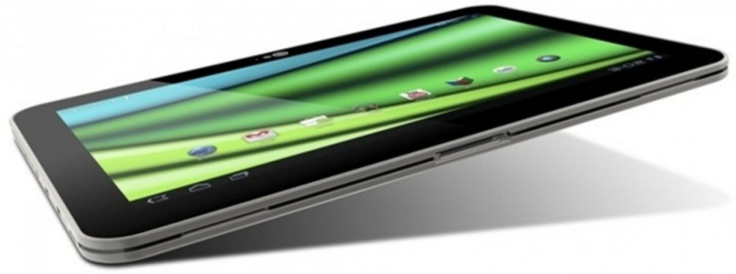Huawei MediaPad 10 FHD vs. Toshiba Excite 10 LE: What's Your Choice?

As the MWC 2012 comes to an end, besides smartphone launches, tablets are also one of the categories that have gained prominence at the show. Nowadays, Lighter, Thinner and More Powerful, has become the success mantra for the latest tablets pouring in the Android market.
After yesterday's announcement of the Toshiba Excite 10 LE release in the market from March 6, 2012 (which the company claims as World's thinnest tablet), here is a spec-by-spec comparison with Huawei's MediaPad 10 FHD, which is being claimed as world's first quad core tablet that is also super thin.
Operating System: What's your flavour?
The aluminum-alloy, unibody designed Huawei MediaPad 10 FHD runs on a Google Android 4.0 Ice Cream Sandwich (ICS) OS. Whereas, Toshiba Excite 10 LE currently is shipped in with Android 3.2 Honeycomb OS, which the company promises will get upgraded to ICS before spring 2012 is over.
Processor Power
Well, Huawei MediaPad 10 FHD is powered by its own proprietary 1.5GHz K3 quad-core processor, with which the company takes the official claim of being the world's first quad-core tablet, enabling it to deliver really high performance. Further, the device has an impressive 2GB RAM. On the other hand, Toshiba Excite 10 LE comes packed with OMAP 4430 dual-core Cortex-A9 chip running at 1.2GHz and is equipped with 1GB RAM.
Display Chromaticity
Toshiba Excite 10 LE sports a 10.1-inch diagonal display with LED Backlit and Corning Gorilla Glass, AutoBrite display with IPS Capacitive Touchscreen Technology. Its touchscreen has 16M Colors with 1280 x 800p pixels of resolution, 16:10 aspect ratio and also boasts Accelerometer, Gyro Sensor, Proximity Sensor, Ambient Light Sensor and Touch Sensitive Controls. While, Huawei MediaPad 10 also sports a 10.1-inch IPS display with a real treat of FullHD resolution of 1920 x 1200 pixels of resolution at 226 ppi. Further, the device also has an in-built Accelerometer, Proximity Sensor, G-Sensor, Light Sensor and Gyroscope.
Camera: Smile, Click and More
Advantageously, the Huawei MediaPad has an 8 megapixels camera with Auto-Focus and LED Flash. Further, it also has a 1080p HD Video Recording Capability and 1.3 megapixels VGA front facing camera. At the same time, Toshiba Excite comes with a 5 megapixels, LED Flash, no Auto Focus, 720p HD Video Recording Capability but a 2 megapixels VGA Front Camera.
Storage Space
Toshiba Excite will have 16GB and 32GB Internal Storage options and will be provided with microSD Card Slot Support to expand its memory upto 32GB. Whereas, the Huawei MediaPad would port fixed memory storage only till 8GB, however, it will also come with a 32GB expandable microSD Card Slot Support.
Size and Weight: The lightest and the thinnest?
On comparing the specs of both the devices, Toshiba Excite gets a fair claim, as the 10 LE measures just (10.1 x 6.9 x 0.3) inches (7.7 mm thickness) in dimension and is merely 535 grams (1.18 pounds) in weight. On the other hand, Huawei MediaPad has 8.8mm thickness and weighs up to 598 grams.
The Battery Factor
Both the devices are equipped with Li-Ion Standard Battery (mAh), which would enable the tablets to run 8 hours of battery life. Further, both the devices also share one common colour - Black.
Other specs:
Furthermore, both the devices boast all the supporting features including, micro USB 2.0, micro HDMI, Bluetooth 2.1, 802.11 Wi-Fi b/g/n. Additionally, Huawei - bags a HSPA+ 21/42/84Mbps/LTE capability. Meanwhile, both the tablets have access to Android Market, a whole host of the Google services plus all the regular features of an Android wireless technology.
Price and Availability Quotient
When it comes to the price points and market availability, Toshiba Excite 10 LE tablet will be available for purchase starting from March 6, 2012, and would be priced at $529 for 16GB version and $599 for 32GB edition. However, for the Huawei MediaPad 10 FHD tablet, the company has not confirmed any exact price info or release date; they have just informed that the tablet would be available globally from the 2nd quarter of this year.
© Copyright IBTimes 2024. All rights reserved.





















